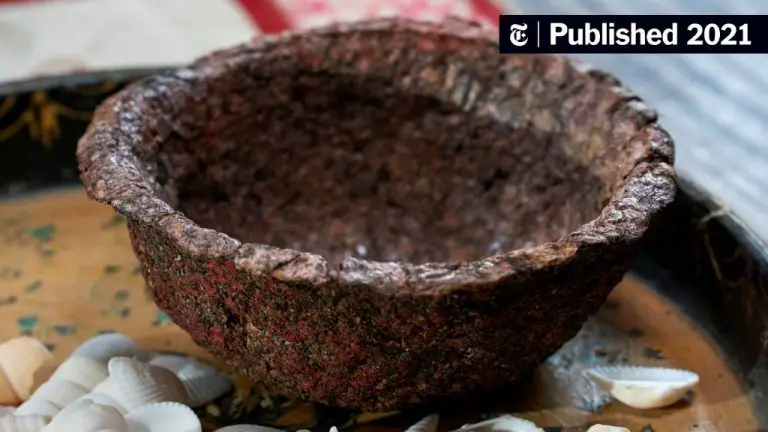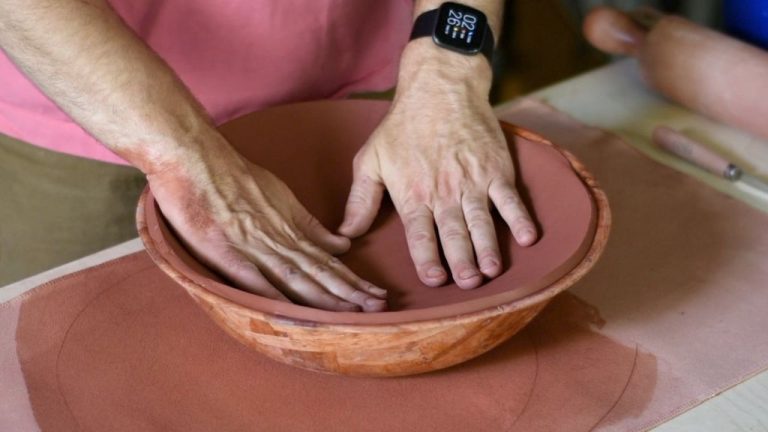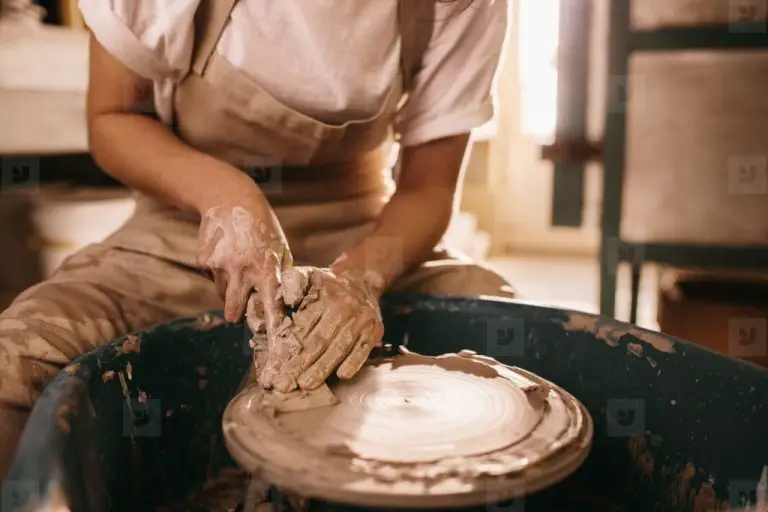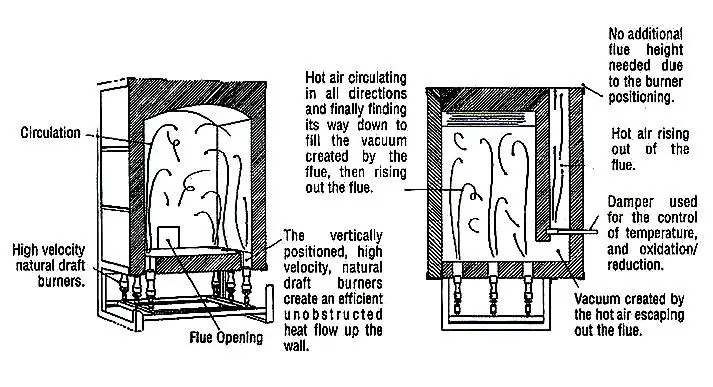How Do You Make Clay In Primitive Ark?
Introduction
Clay is a versatile material that has been used since ancient times to create pots, sculptures, tiles, and many other objects. The unique properties of clay allow it to be shaped when wet, hold its form when dried, and harden when fired at high temperatures. In a primitive or ancient setting, people relied on naturally occurring deposits of clay for their crafting needs. Knowing where to dig up clay and how to process it into a workable material was an essential skill.
The process of making clay begins with gathering the raw clay materials, often from river beds or areas with exposed clay deposits. Next, the clay is refined by removing impurities and ensuring an even consistency. Once the clay is prepared, it can be hand molded into shapes and decorative objects. After some drying time, the clay pieces are fired at high heat using a kiln or open fire pit to permanently harden them. The resulting pottery and artifacts were not only beautiful works of art, but necessary tools for storing food and water in the days before more advanced containers were invented.
Clay was one of the most versatile and vital materials for early civilizations. Mastering the process of locating clay sources, processing the raw materials, and firing durable clay objects was an important advancement. This allowed people to create vessels for cooking, storage, trade, and art that greatly benefited society.
Gathering Clay Materials
One of the first steps in making clay is finding a source of clay and digging it out of the ground. There are several types of clay that work well for pottery and sculpture including kaolin, ball clay, and fire clay. Kaolin clay is very pure and white in color while ball clay and fire clay tend to be more earthy shades of brown or red. Good deposits of clay can often be found near river banks or in areas with sedimentary rocks. The best tools for digging and extracting clay are shovels, picks, and digging sticks. It’s important to dig out big chunks of moist clay from below the topsoil. Let the clay dry slightly before attempting to transport it back to your work area. Look for clay with a smooth, slippery feel that is free of rocks and debris.
Processing the Clay
Once you have gathered your clay materials, the next step is processing the clay to prepare it for shaping and molding. This involves removing any impurities, soaking and slaking the clay, and kneading and wedging the clay.
To remove impurities, you will want to break up any clumps of clay and pick out any rocks, roots, or other debris. It helps to soak the clay in water to make this easier. The water causes the clay to disintegrate, allowing the denser impurities to separate and sink to the bottom.
After removing impurities, soak the clay again in a container filled with water. This process is called slaking and allows the clay particles to fully saturate with water. Slaking makes the clay more pliable and easier to work with.
Next is the kneading and wedging process. Knead the clay vigorously to create an even consistency and bring any remaining air bubbles to the surface. Then cut the kneaded clay into smaller sections and wedge it by slamming it against a flat surface. This aligns the clay particles and removes any remaining air pockets.
Once your clay has been sufficiently processed, it is ready for shaping and molding into various objects and sculptures.
Shaping and Molding
Once the clay has been properly prepared, it’s time to start shaping it into desired objects. In primitive times, there were three main handbuilding techniques used:
Pinch Method
The pinch method is likely the earliest and most basic clay shaping technique. It involves pinching and pulling the clay with fingers and thumbs to form simple shapes like bowls, cups or vases. This method works well for smaller pieces.
Coil Method
The coil method joins ropes or coils of clay together to build up height. The coils are stacked and blended together to form the shape. This method is great for making jars, pots and other cylindrical objects.
Slab Method
The slab method involves flattening clay into thin sheets or slabs, then cutting and joining those pieces to form shapes. The slabs can be draped over molds for support. This is useful for making flat items like plates, platters and tiles.
In addition to handbuilding, primitive potters often used simple molds made from existing vessels, wood or stone. The wet clay was pressed into the mold to achieve symmetrical shapes. Details could be added by hand after.
To smooth seams and refine the look, pieces were burnished with stones, bones or wood tools. Wet clay can be easily blended by smoothing with fingers, sticks or soft leather.
Drying the Clay
Once the clay has been shaped, it needs to be thoroughly dried before firing. There are a couple main ways to dry the clay in primitive conditions:
Air Drying: The most straightforward method is to simply leave the clay artifacts exposed to open air. Keep them out of direct sunlight or rain. Air drying can take 1-2 weeks depending on size, shape and humidity levels. Turn pieces regularly so they dry evenly.
Sun Drying: For faster drying, you can place the clay pieces in direct sunlight. Rotate them periodically to prevent cracking and warping from uneven drying. Be sure to bring pieces in at night or cover to prevent rewetting with dew. Sun drying may take 2-7 days.
Fire Drying: The fastest method is drying near heat from an open fire. Be very careful, as pieces can crack from uneven drying. Keep the clay at least 12 inches from flames and turn frequently. Fire drying can take 1-3 days depending on size.
Decorating
Once the clay has been shaped, molded, and allowed to dry, the next step is decorating. Decorating clay objects serves both aesthetic and functional purposes in a primitive society. There are several common techniques for decorating clay:
Incising Designs
One method is incising, which involves using a sharp tool to cut designs into the leather-hard clay before firing. Various implements can be used for incising like sticks, bones, shells, or stone tools. Intricate patterns and images like animals, plants, geometric shapes, and human figures can be incised. The incisions add visual interest and distinction to the clay object.
Adding Colorants
Another decoration technique is adding colorants to the clay. Natural pigments derived from plants, minerals, or soils can be mixed into the clay or applied to the surface. Common colorants include ochre, iron oxide, manganese, ash, and charcoal. When the pigmented clay is fired, the colors are fixed permanently. The colors enabled people to imbue the clay with symbolic meaning.
Burnishing
Burnishing is rubbing and compacting the surface of the clay object during the leather-hard stage. A smooth tool like a pebble, bone, or stick is used to burnish. This polishes the surface to a sheen and enhances the natural color of the clay. It also makes the object less porous. Burnishing creates high-quality clay objects with visual appeal.
Firing the Clay
Firing the clay is one of the most crucial steps for ensuring your pottery is strong and durable. In a primitive setting without access to modern kilns, there are a few key methods for firing clay:
Open Firing
Open firing involves building a wood fire on the ground and placing your pottery pieces around it. The pieces are exposed to the flames and heat. This is the simplest firing method, but can lead to uneven heating and exposure to ash or dirt blowing into the pieces.
Pit Firing
Pit firing provides more protection for the pottery. A pit is dug into the ground and a fire is built in the bottom. Once the fire has burned down to coals, the pottery is carefully placed around the coals and the pit is covered with fuel, wood, leaves, or other organic material. The pottery is fired by the heat radiating from the coals below.
Primitive Kilns
For better heat control, primitive kilns can be constructed from brick, clay, or cob. A fire is built in a chamber and the pottery is placed in a secondary chamber, allowing the heat to be regulated and direct flames prevented from touching the pieces. The kiln is then sealed for firing. Though more complex, a primitive kiln provides the most even and controlled heating for stronger and higher quality pottery.
Using the Finished Products
Once the clay has been properly fired, it can be used for a variety of purposes that are vital for survival in primitive times. Some of the main uses of finished clay products include:
Storing Food and Water
Clay pots and containers are ideal for storing food and water. The clay provides a watertight vessel that can hold liquids or keep food fresh and untainted. Smaller clay jars and jugs can be used for transporting water from streams or holding oils and grains. Larger clay pots and urns can be used for fermenting beverages or storing bulk foods like nuts and seeds.
Cooking
Cooking food over an open fire can be made far more effective through the use of clay pots and griddles. A simple clay pot suspended over a fire allows for boiling stews and grains. Direct heat cooking on clay griddles or plates provides an ideal surface for cooking meats, vegetables, and flatbreads. The clay holds heat and distributes it evenly for thorough cooking.
Making Tools
Clay can also be shaped into useful tools and instruments. Molding wet clay on a stick makes a serviceable hand shovel. Baking clay around a stick or stone creates a durable hammer head. Smooth clay surfaces provide ideal palettes for grinding spices and minerals into pigments for paints. Hardened clay bowls and wheels allow for transporting goods and processing foods.
Improving the Process
Making clay products in primitive environments can be greatly enhanced by experimenting with the process and innovating new techniques. Here are some ways ancient people likely improved clay making over time:
Experimenting with clay mixes
Ancient potters probably tested different ratios of clay, temper materials like sand or crushed rock, and organic binders. Finding the right mix makes clay easier to work with and less likely to crack. The clay body can be customized for its intended use.
Creating better tools
Early clay workers used simple wood, stone, or bone tools. Over time, they created specialized shaping instruments, engraving tools, and devices like pottery wheels and kilns. These innovations allowed for more intricate and symmetrical clay pieces.
Advancing firing techniques
Firing clay transforms it permanently into ceramic. Early firings were done in open fire pits, which gave inconsistent results. Enclosing the fire in clay kilns allowed better control of temperatures and oxygen flow. New firing methods let artisans create advanced glazes and colors.
Conclusion
Clay making was an incredibly important process for ancient cultures around the world. The ability to shape clay into pottery, tools, art, and more provided early civilizations with ways to cook, store food and water, express creativity, and advance culturally. While clay production was primitive at first, methods slowly improved over centuries as cultures shared knowledge.
The basic process involved finding the right clay materials, processing and purifying the clay, molding it into shapes, decorating, and then firing or baking the clay to harden it. Early potters likely located clay near river banks and water sources, relying on hand tools and techniques like coiling and pinching to shape basic but useful vessels. Over time, potters wheels and kilns were developed to improve shaping and firing.
As civilizations advanced, so did clay working techniques. Glazes and decorative embellishments were added for artistic and aesthetic purposes. The types of clay used diversified, with potters learning which clay worked best for different items. Firing techniques became more sophisticated, producing harder, more durable products. Future innovations will likely continue improving the clay production process.
While modern methods are far more advanced, the simple and primitive origins of clay working enabled ancient cultures to flourish. The ability to store, cook, and transport food and water, create artworks, build shelters, and more allowed early civilizations to grow and thrive. Primitive clay making processes provided the foundation for millennia of cultural and technological progress.




